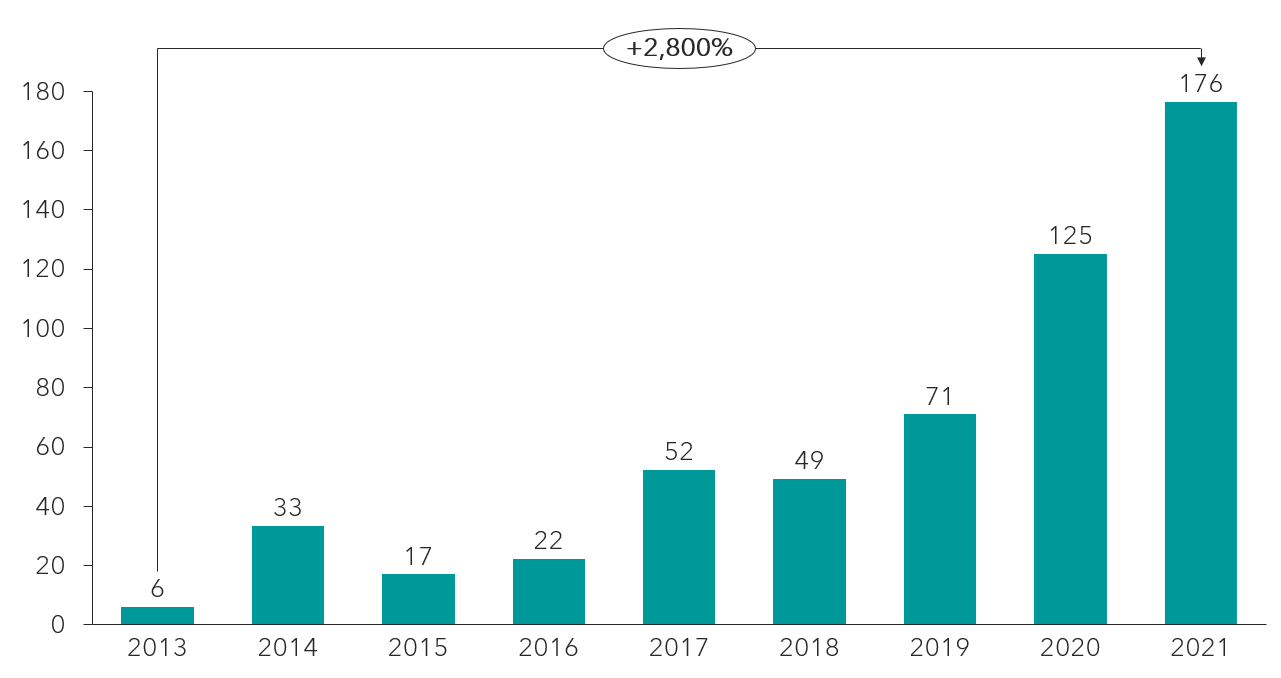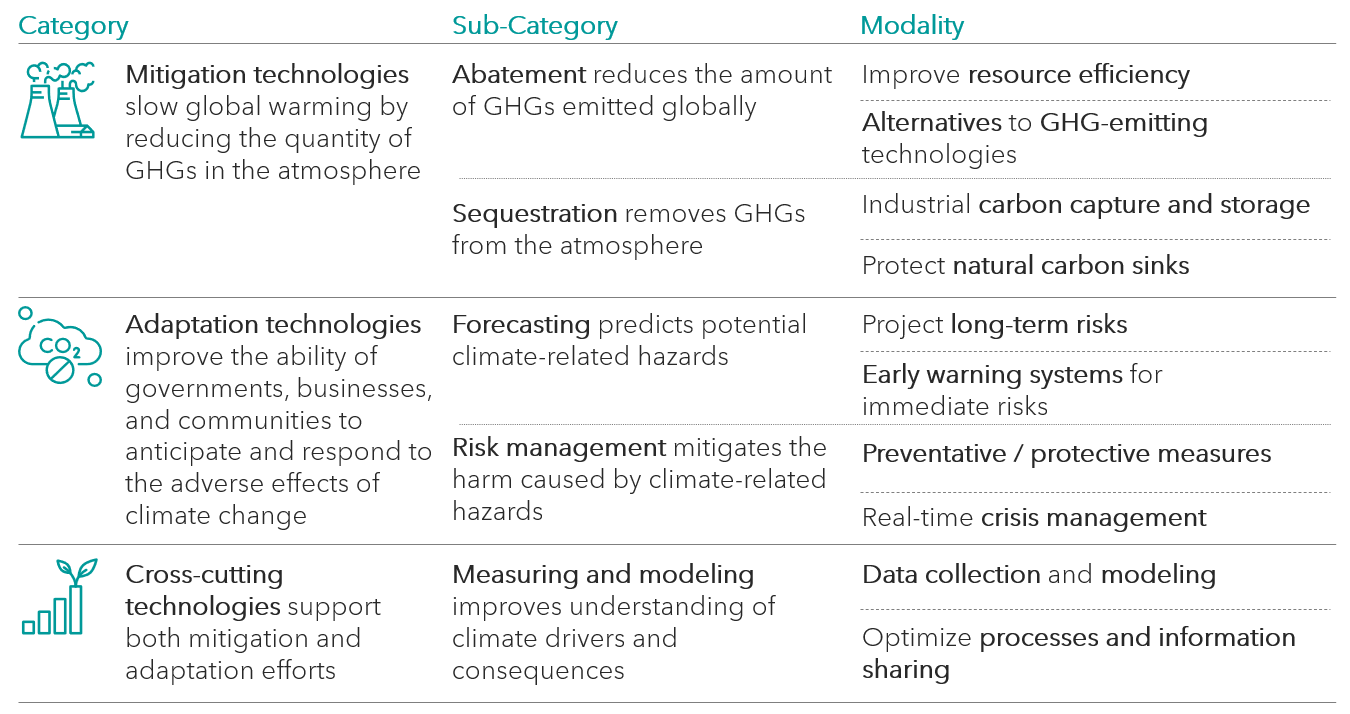Copyright © 2023 Telesto Strategy LLC, All rights reserved.
AI's explosive popularity over the last year has proven its global importance, but can it also help address climate change?
In previous articles, we have discussed different definitions and categories of environmentally friendly technologies and what distinguishes them. But what about new technologies that are not explicitly climate or sustainability focused?
As we have recently seen in the past, exciting new technologies are not necessarily more sustainable than their predecessors, and in some cases, they may actually end up being environmentally detrimental (e.g., mining for cryptocurrency). However, the division between climate-tech and non-climate-tech is not always so stark. In the case of artificial intelligence (AI), a technology which is enjoying widespread attention and fascination at the moment, there is plenty of evidence to suggest that its applications might be capable of enhancing the impact of other climate interventions.
Everybody loves AI
AI refers to technologies which leverage computers and machines to mimic the problem-solving and decision-making capabilities of the human mind. Although the term has been around since the 1950s, it recently exploded in popularity with the advent of generative AI, or the use of machine learning algorithms and models that enable computers to use existing content like text, audio and video files, images, and even code to create completely new content. Following the launch of OpenAI’s artificial intelligence chatbot, ChatGPT, in November 2022, worldwide Google searches for it increased by more than 2,850% – making it the fastest growing search query of the past year. Corporations and investors were also eager to surf the wave of the world’s fastest growing application. Bloomberg reported over 1,000 mentions of AI in Q2 earnings calls – a 100% increase over last year.
Enthusiasm for AI and hence its growth is also projected to continue. The International Data Corporation (IDC) estimates that the worldwide AI market, including software, hardware, and services, will reach the $900 billion mark in 2026, up from $176 billion in 2021 (which was itself a 2,800% increase from 2013). The Covid-19 pandemic also contributed to AI’s growing popularity, as it brought into focus the vulnerability of critical systems to unpredictable events – crystallizing the opportunity for technology to support in making supply chains and services more adaptive and resilient.
Annual global corporate investment in AI, 2013-21 ($ billions)

SOURCE: Our World in Data
As generative AI catapulted the topic into the consciousness of the public (and board rooms) around the world, ethical concerns regarding the technology’s rapid deployment and future applications have also emerged. Viewed strictly through the lens of sustainability, however, it is clear that AI has a variety of potential applications to aid in both mitigating and adapting to the climate crisis.
How can AI drive climate impact?
As we have previously discussed, climate tech can be considered as any technology which aims to mitigate and adapt to the effects of climate change. As such, there are two main categories of climate tech: mitigation (technologies which seek to slow global warming by reducing the quantity of GHGs in the atmosphere) and adaptation (technologies which seek to improve the ability of governments, businesses, and communities to anticipate and respond to the adverse effects of climate change). Correspondingly, AI can therefore be considered as supporting climate tech in either of these categories as well as in cross-cutting ways.
AI applications in climate tech

SOURCE: Telesto Strategy research; BCG; Global Partnership on AI
While AI may not qualify as a standalone climate technology under this definition, it clearly can serve as an enabler to help:
- Improve and scale climate mitigation technologies;
- Strengthen our collective ability to build resilience and adapt to climate change; and
- Better understand the drivers and consequences of climate change.
Below, we’ll explore each of these potential categories in greater detail and provide examples of how AI is already contributing to the fight against climate change.
Unpacking AI's role in mitigation, adaptation, and cross-cutting technologies
AI in mitigation
The IDC estimates that AI will contribute to 70% of the emissions reduction efforts undertaken by 2060, netting the equivalent of 35 billion tons of carbon emissions diverted from the atmosphere. One area where AI can support emissions reduction is transportation, which is responsible for roughly 16% of annual global GHG emissions. AI-driven software can improve the efficiency of both public and private modes of transport, making greener alternatives more attractive while cutting emissions by reducing car traffic. The IDC white paper found that AI-enabled traffic control technologies could reduce carbon emissions in cities with a population of 10 million by roughly 41,600 tons per year, which is equivalent to the carbon emission of 14,000 private cars in a year. This offers just one example of how substantial AI’s impact on mitigation could be.
AI in adaptation
Climate adaptation and resilience efforts are especially vital for the over 3 billion people living in areas which are highly vulnerable to climate change, particularly in the Global South. One of the UN agencies tasked with eradicating poverty and reducing inequalities, the United Nations Development Programme (UNDP), believes so strongly in the potential of AI to combat the effects of climate change that they’ve joined an international coalition called AI for the Planet.
The coalition identified AI applications in climate adaptation, including gathering and analyzing large datasets in real time to create or improve early warning systems for extreme weather events or other climate-related hazards. Johns Hopkins University, for example, predicts that AI will improve the efficacy of satellites in monitoring forest fires, which are projected to increase in both frequency and severity. Better monitoring will help governments and communities improve their resilience both in the immediate term through better early-warning systems when a fire is active, and in the long term by better understanding how wildfires operate.
AI in cross-cutting applications
Predictive AI refers to tools which can identify patterns in data sets and make predictions, recommendations, or decisions in real or virtual settings. In the context of climate change, predictive AI can help create accurate emissions forecasts based on current data and generate insights to improve resource efficiency. BCG found that AI can be used to help reduce GHG emissions equal to 5% to 10% of an organization’s carbon footprint.
Additionally, AI can support the automation of key processes needed to monitor and track GHG emissions, especially in situations where there are differences in data architecture. For example, AI can be leveraged to automatically scan utility bills, invoices, and travel records to extract salient information that businesses use to track and report their Scope 1-3 emissions seamlessly, thereby eliminating time-consuming manual entry approaches. AI can also identify anomalies in data, helping asset owners to quickly identify and remedy issues such as fugitive emissions or abnormal water leakages.
Interested in learning more about how AI and other emerging technologies might help you set and meet your sustainability goals? Our (human) experts are here to help. Contact us at info@telestostrategy.com today.

